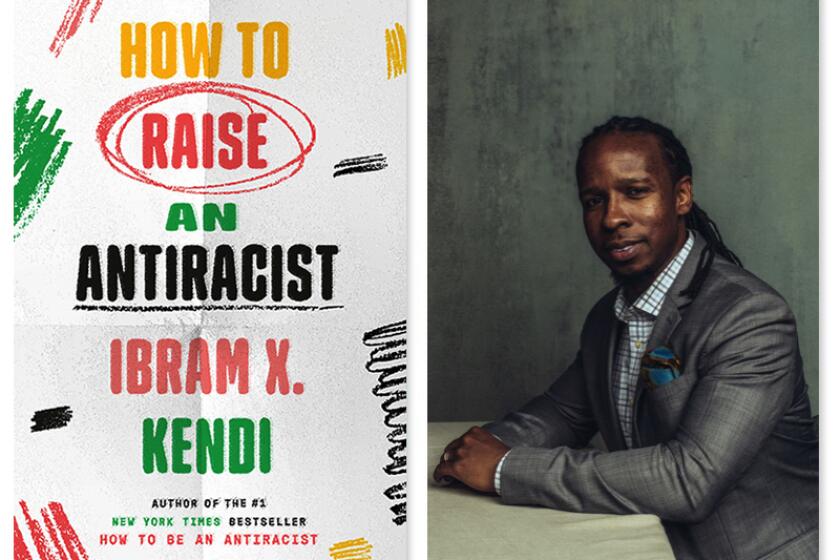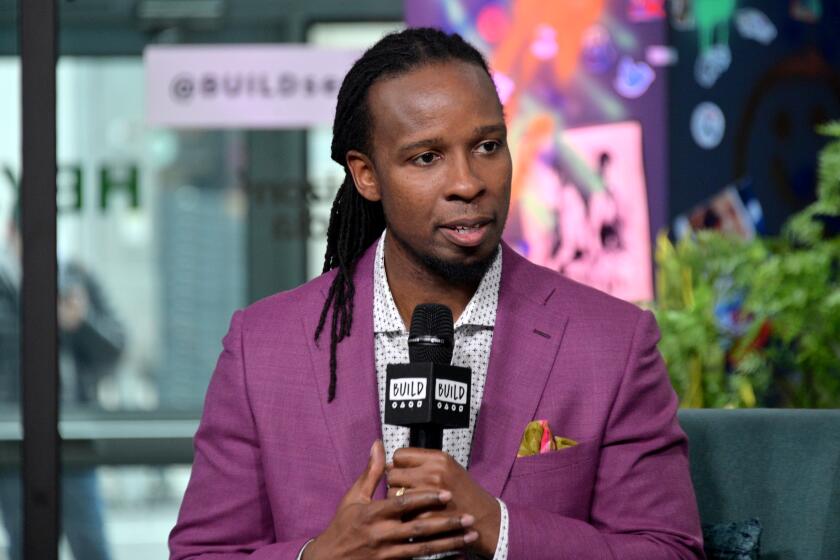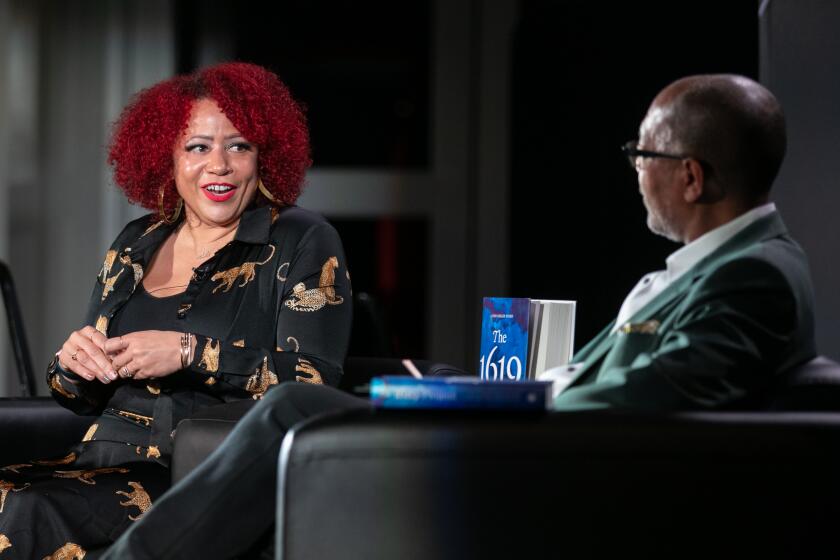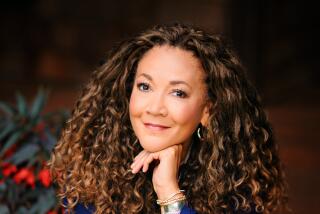Ibram X. Kendi on preparing children for the realities of racism

- Share via
Ibram X. Kendi has spent years studying racism’s history, and he is intimately familiar with its violence, horrors and brutalities.
So when he became a father six years ago, the thought of exposing his daughter to the legacy and realities of racism deeply troubled him.
The issue became more personal when Imani, then 1, became attached at day care to a white doll with blue eyes and blonde hair.
“We didn’t know what to make of it,” said Kendi, a National Book Award winner, MacArthur fellow and director of the Center for Antiracist Research at Boston University, speaking Wednesday night at USC’s Bovard Auditorium. “Was she attached to the doll and it just happened to appear white, or was the whiteness of the doll attaching her to it?” he thought.
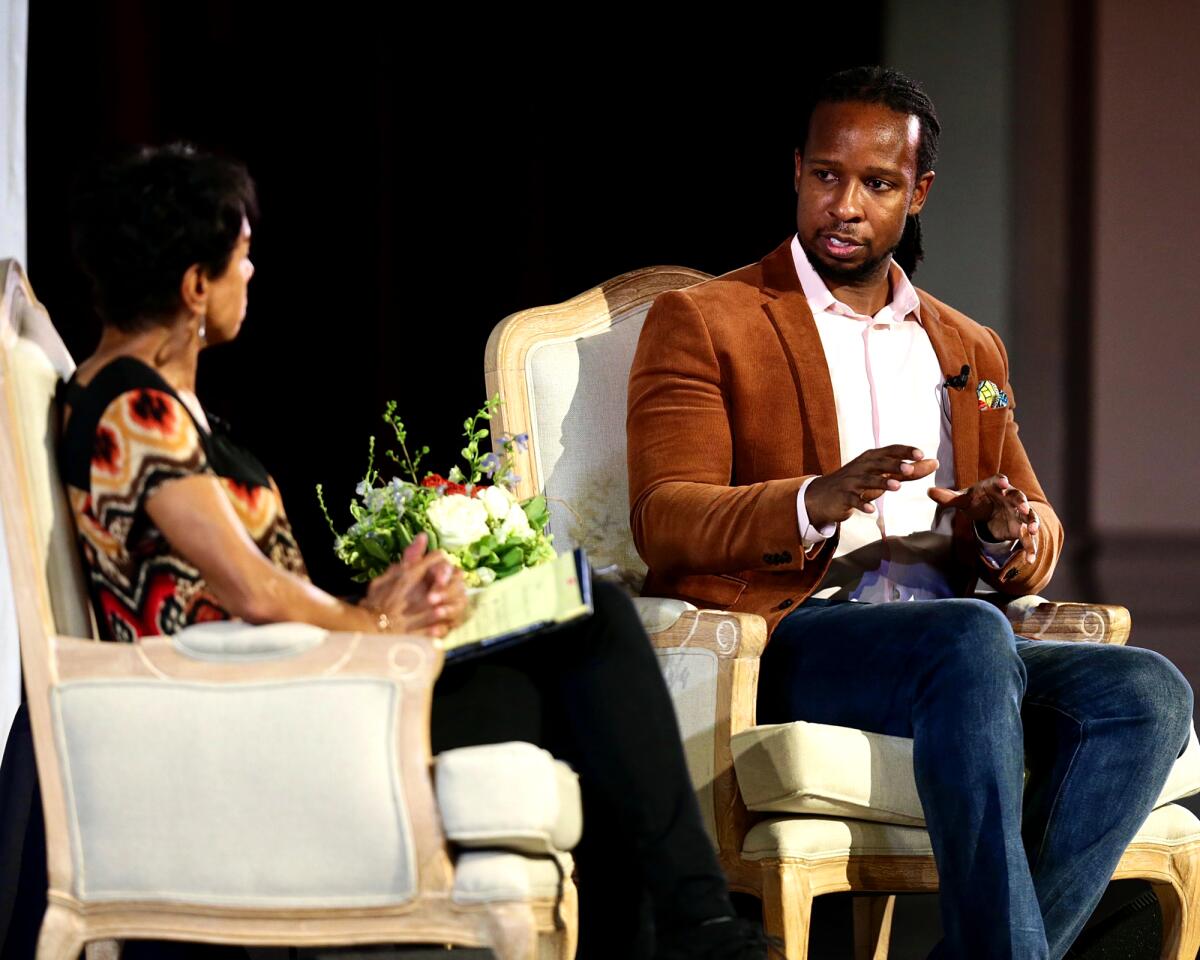
In his new book, professor Ibram X. Kendi gives advice on how to raise anti-racist kids, and on how talking about race helps us all.
That unknown, and the possibility that she was drawn to the doll’s whiteness, disturbed him. “It’s what really opened my mind to the importance of reflecting on these issues, and it led me down the path to ultimately writing the book.” He later realized there were only white dolls available for her to play with at day care and that she needed other choices too.
This month, Kendi published “How to Raise an Antiracist,” a deeply personal and researched guide for parents, teachers and caregivers and a follow-up to his 2019 internationally bestselling “How to Be an Antiracist.”
Kendi joined columnist Sandy Banks for a wide-ranging L.A. Times Book Club conversation about fatherhood, teaching children about racism and showing kids what makes groups of people similar alongside conversations about what makes them different.
“So how do we teach and prepare kids about racism without portraying the world as a completely terrible place?” asked Banks during the hourlong discussion.
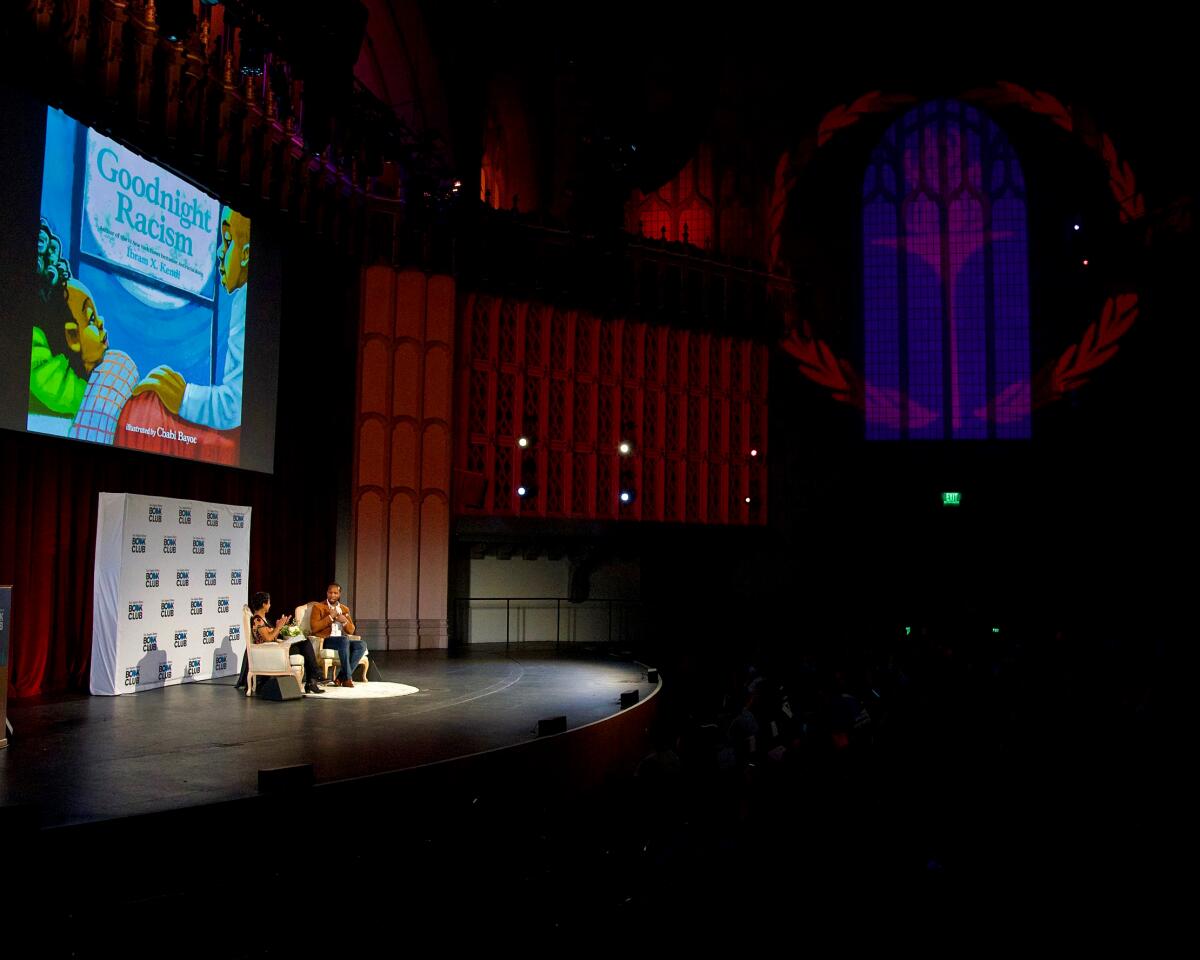
Kendi used the analogy of teaching a child to look both ways before crossing the street.
“We’re telling them that there are dangers in society, and it’s incredibly important for you to protect yourself from those dangers, and if you actually do these things, then you won’t end up necessarily getting hit,” explained Kendi.
“When we’re in that mind-set of teaching our children to look both ways, to always hold an adult’s hand when you’re crossing the street, we’re thinking fundamentally about protecting them,” he said. “That is our focus. We’re less concerned about the discomfort that they’re having.”
When we teach children about race, we’re safeguarding them from it, said Kendi, adding that its important for adults to distinguish between constructive and destructive discomfort, “which is what is going to happen if they’re not protected.”
During the discussion, Banks brought up the disturbing, growing trend of white supremacists recruiting white teenage boys online and asked what teachers and caregivers can do about it.
First and foremost, said Kendi, they have to know what it is — if they can identify it when they encounter it, they’ll know it’s wrong.
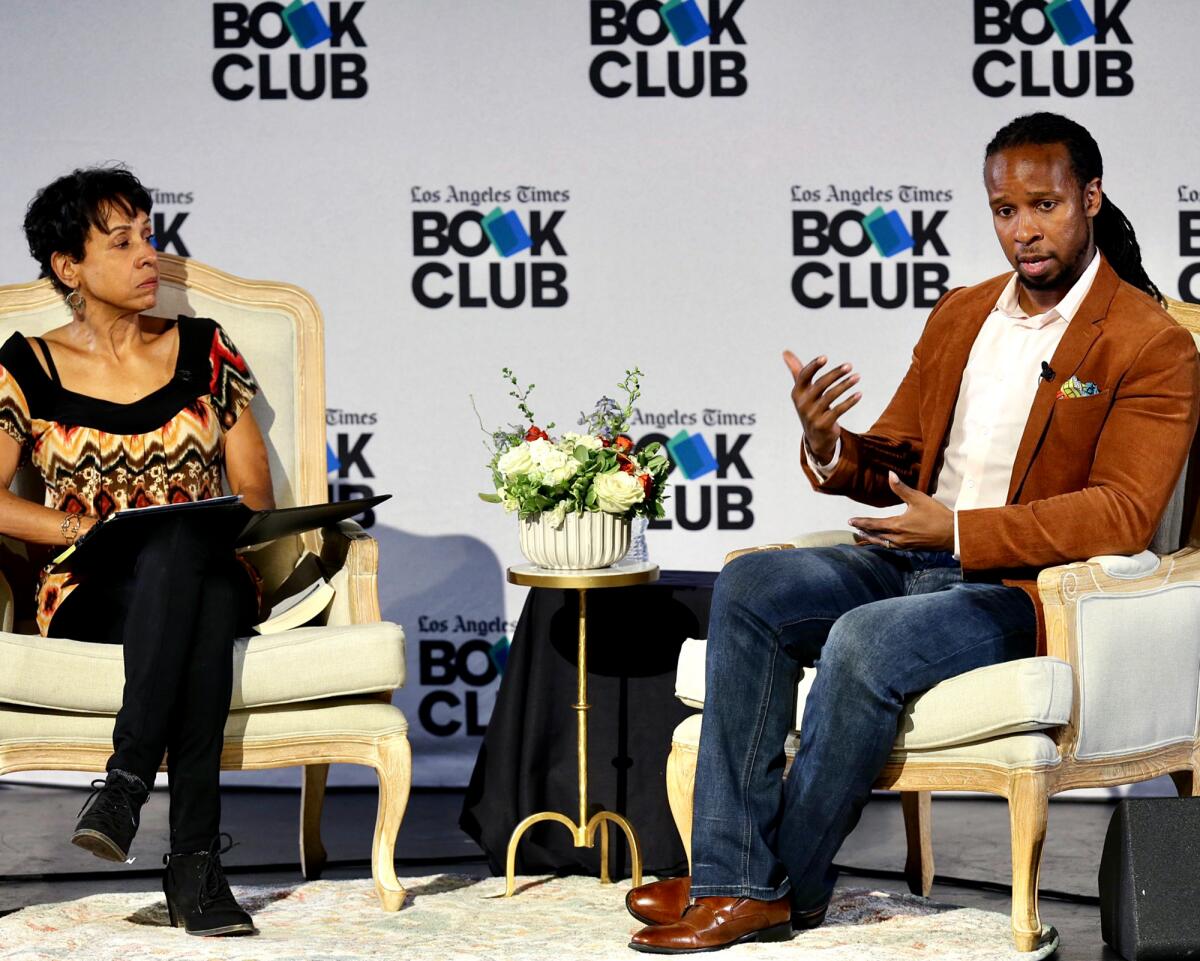
When children say racially insensitive things, author Ibram Kendi said it’s important to question them instead of responding with, “Don’t say that.”
“How can a white teenager protect themselves from white supremacy if they never learned about it?”
So what does it mean to be antiracist? asked Banks early on.
Kendi began by distinguishing a racist idea from an antiracist one.
“A racist idea connotes racial hierarchy — that a particular racial group is superior or inferior, or in todays’ terms ‘This is what’s wrong with Black people’ or ‘This is what’s right about this other group,’” explained Kendi.
Ibram X. Kendi joins the L.A. Times Book Club to discuss “How to Raise an Antiracist.”
Alternatively, antiracist ideas suggest that all racial groups are equal — biologically, culturally, behaviorally.
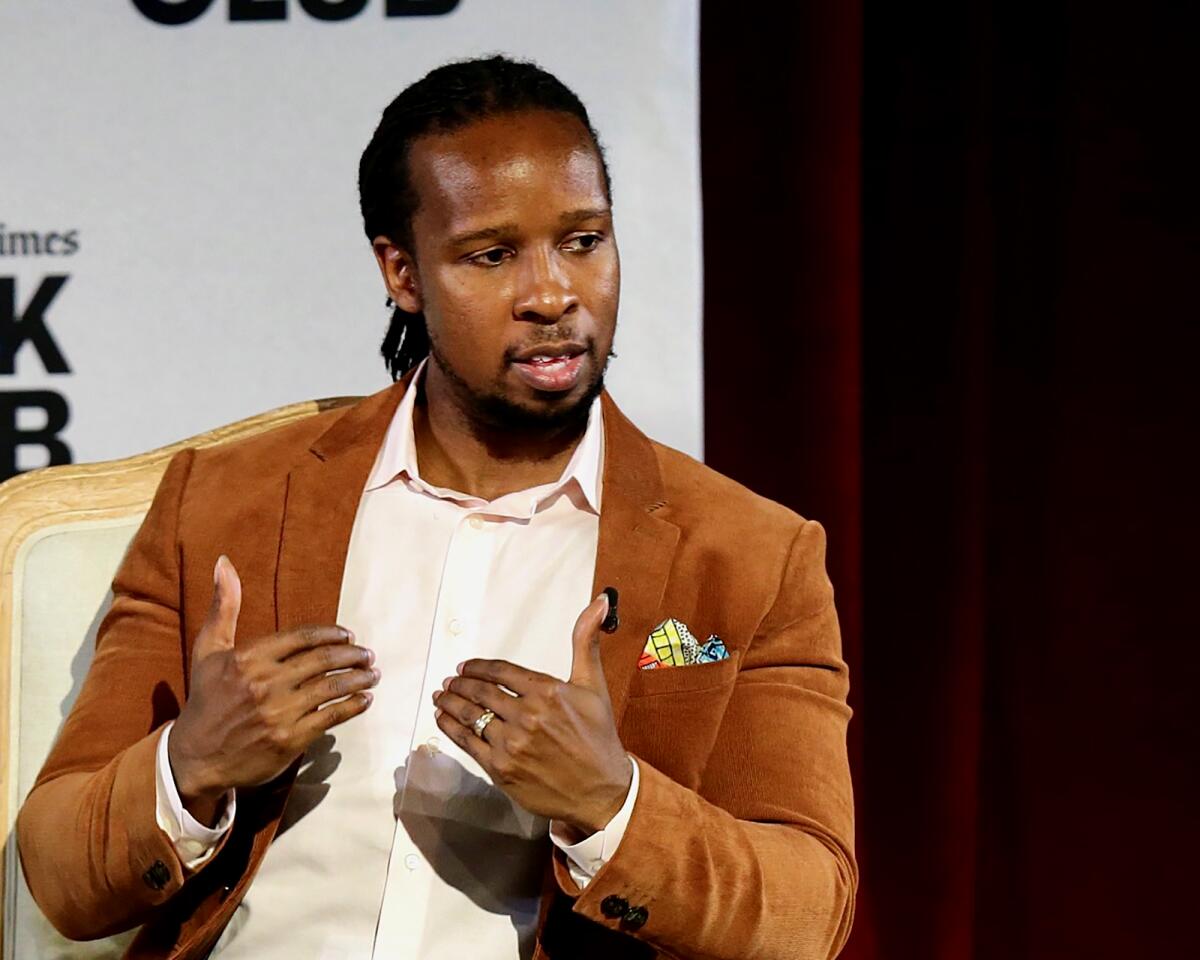
Ibram X. Kendi just published “How to Raise an Antiracist,” a deeply personal and researched guide for parents, teachers and caregivers on teaching antiracist principles to children.
He emphasized that a key difference between being “antiracist” and “not racist” — a common response when someone is accused of saying something racist — lies in people’s actions.
A person who is being racist, for instance, might support policies that perpetuate inequality and injustice or do nothing to challenge them, which aids in maintaining the status quo.
“The opposite of that is being antiracist; it’s actively challenging those racist policies, putting in place equitable and just policies, recognizing equality of the racial groups,” said Kendi.
To be antiracist, he continued, is also to admit and to recognize when we’re being racist.
When it comes to children saying racially insensitive things, Kendi said it’s important to question them instead of responding with, “Don’t say that.”
“The child might stop saying it, but they’re still going to think it” or repeat it to someone else, he said. But questioning them opens conversations about people’s differences and similarities, and highlights this truth: “Racism sours and poisons what makes us, what makes humanity, beautiful — our differences,” he said.
The audience clapped, cheered and gave Kendi a standing ovation at the end of the event.
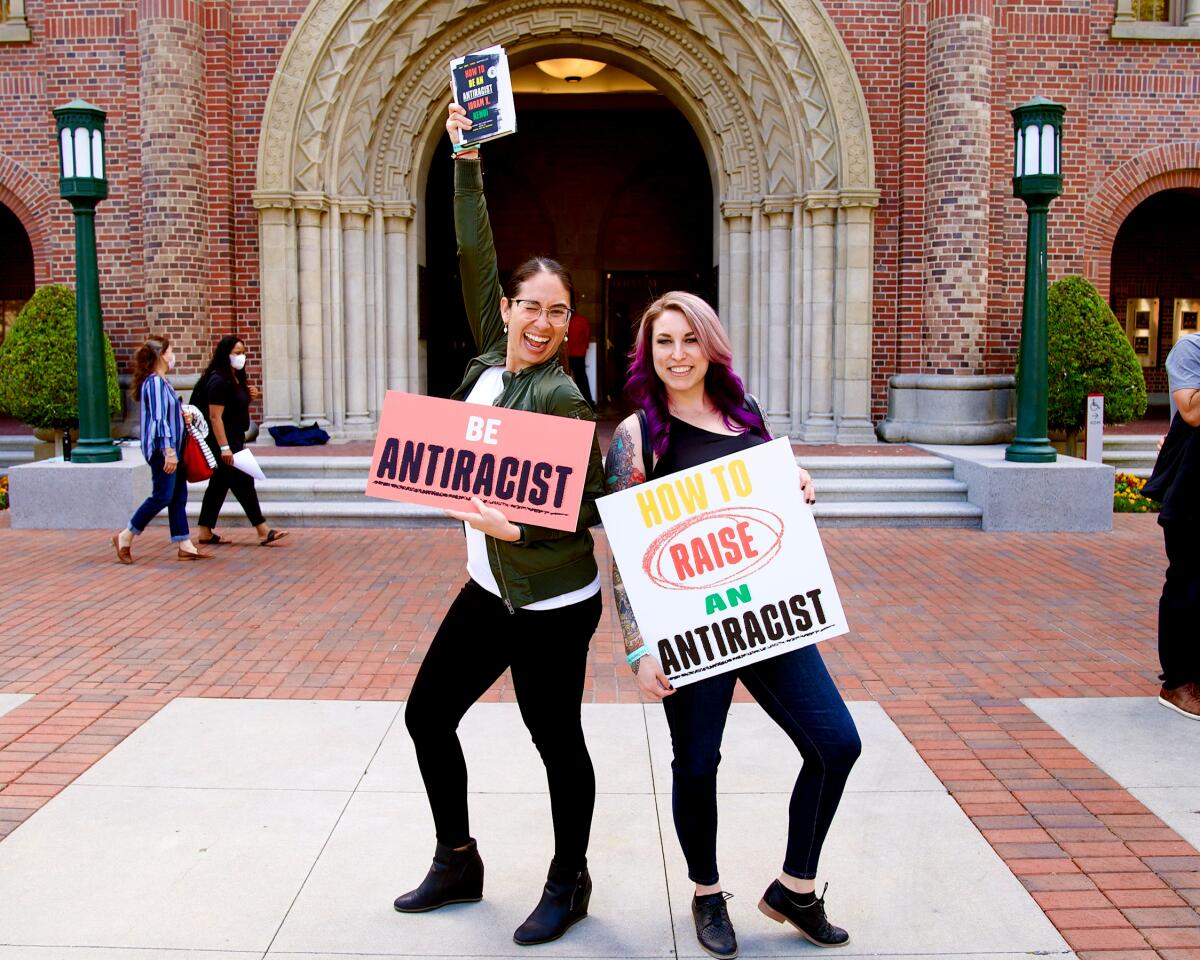
Two attendees to the L.A. Times Book Club’s conversation with Ibram X. Kendi pose for a photo.
Jay Jackson was among them.
The 71-year-old educator from Culver City said she hadn’t read any of Kendi’s books, but appreciated that his perspective is derived from research and life experiences.
“I like that he peppered throughout his talk examples of what we can do in our lives [to confront racism], either in our profession or just being out in the playground and observing someone who is mistreating a child because of their skin color,” she said. “Many of us have been confronted with situations, but we think ‘I don’t want to create a problem.’”
Mary Lang, a 65-year-old retired school teacher, was particularly moved by Kendi’s hopeful parting comment: That a post-racist world depends on children being able to imagine it; that’s the vision he portrays in a new companion book for kids, “Goodnight, Racism.”
“What he said about kids really struck me: That they can imagine and they can dream, but if they can just see it or have one hint that [an antiracist world is] possible, then they’ll work towards achieving it.”
Nikole Hannah-Jones joined Times executive editor Kevin Merida for an insightful L.A. Times Book Club conversation about her book “The 1619 Project.”
More to Read
Sign up for our Book Club newsletter
Get the latest news, events and more from the Los Angeles Times Book Club, and help us get L.A. reading and talking.
You may occasionally receive promotional content from the Los Angeles Times.
